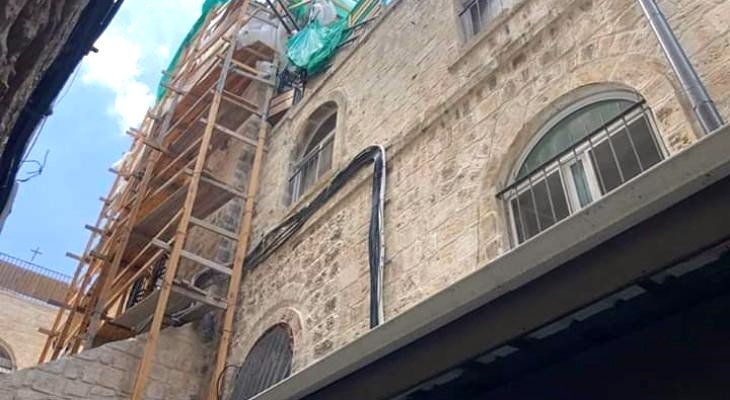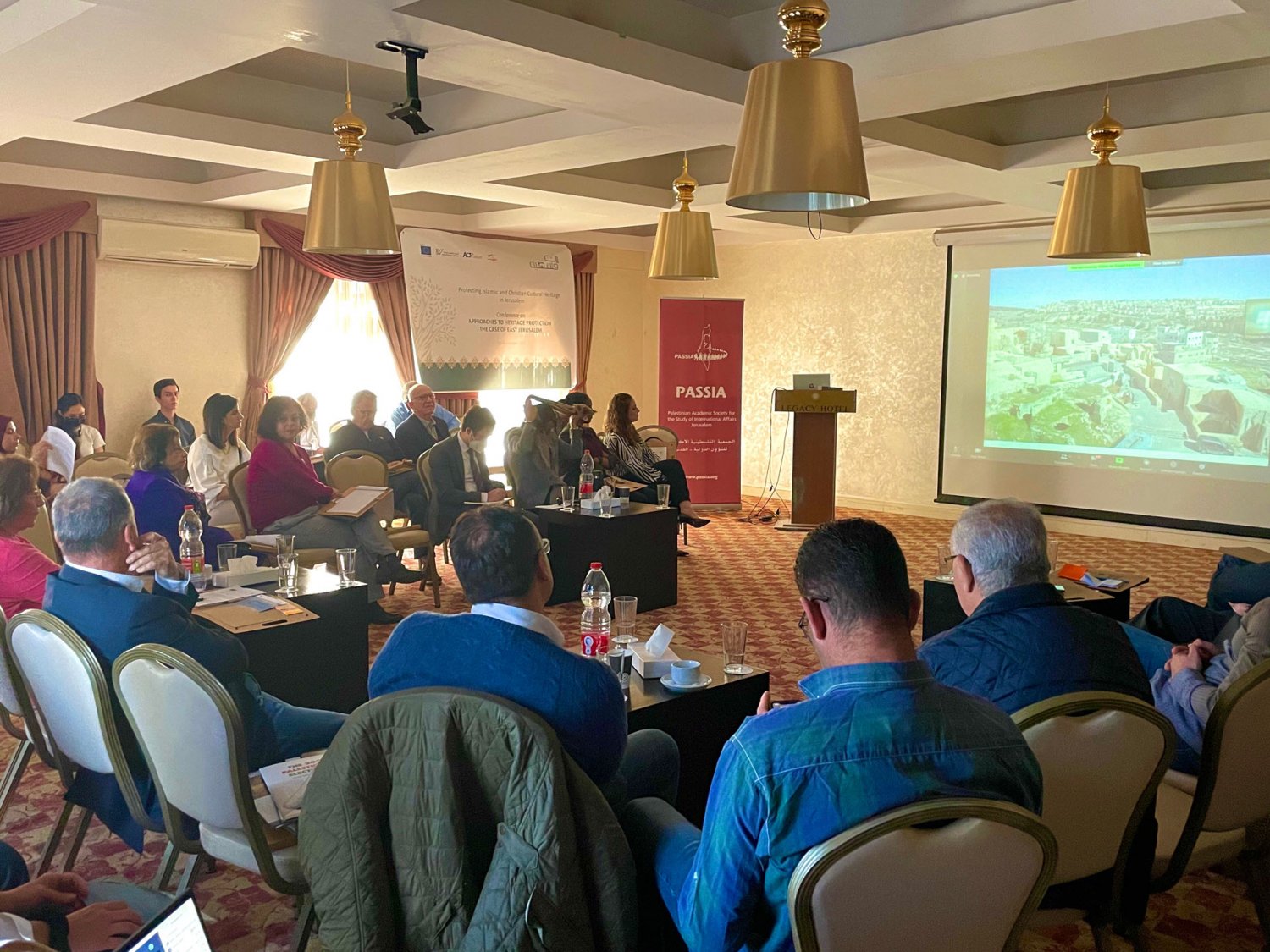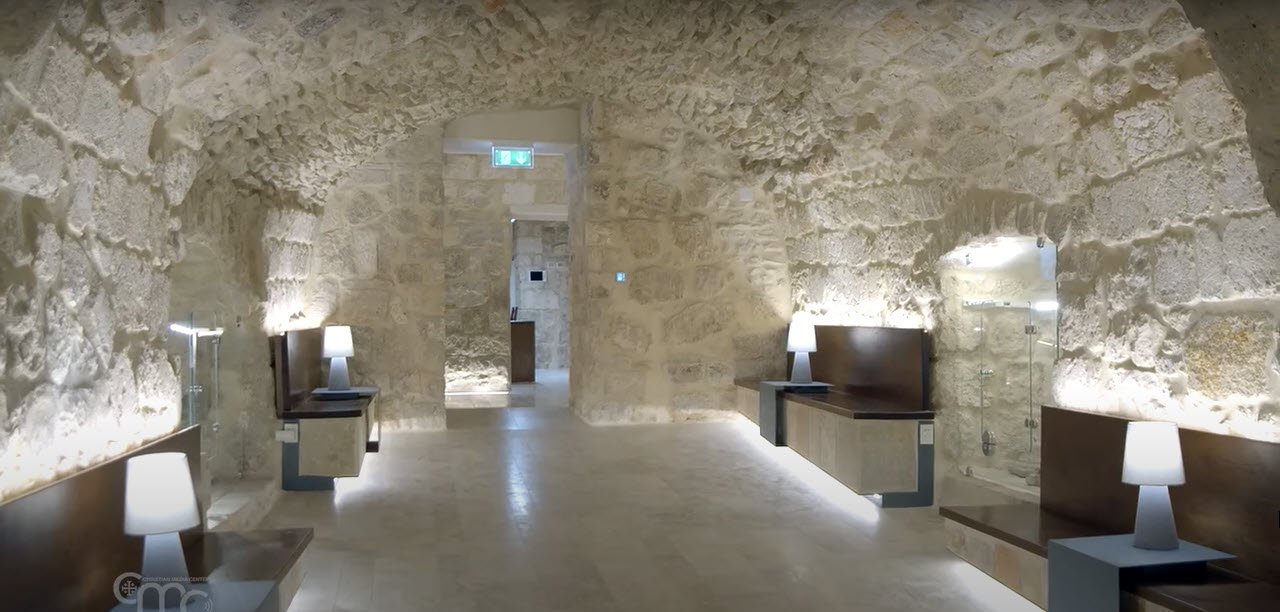On Tuesday, November 30, 2021, PASSIA (the Palestinian Academic Society for the Study of International Affairs) held a conference at the Legacy Hotel in East Jerusalem on “Protecting Islamic and Christian Cultural Heritage in Jerusalem.” The conference is part of a larger ongoing project, funded by the European Union with the partnership of Palestinian Vision and ACT—Conflict Resolution, which aims to “contribute to preserving the Palestinian character and cultural heritage of East Jerusalem by strengthening the Palestinian identity and enhancing the sense of belonging among Palestinians.”1
The conference considered approaches to heritage protection as based on the case of East Jerusalem. Almost 50 participants attended in person, and about 20 others attended the live sessions via Zoom. Simultaneous Arabic-English or English-Arabic translation was provided.
The program had four sessions.



